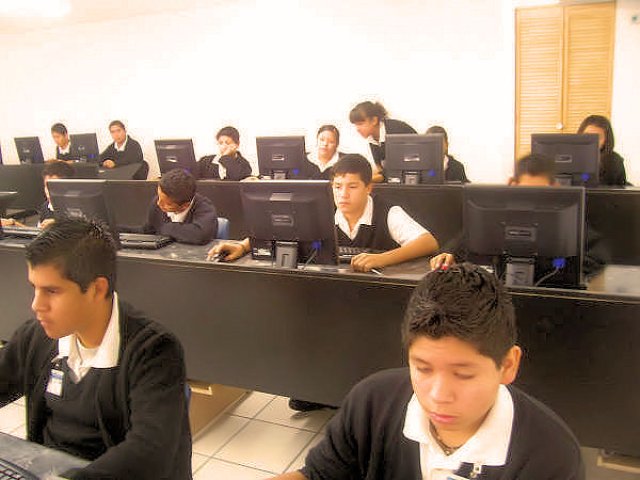
New World of Indigenous Resistance
By Noam Chomsky and voices from North, South, and Central America
City Lights Open Media, 2010, 300 pages
Review by Mat Ward
This book bills itself as a “virtual hemispheric conversation” and claims to be the first book of its kind.
It is certainly an eye-opener.
The book’s commissioning editor, Lois Meyer, interviewed renowned linguist and activist Noam Chomsky on the subject of indigenous resistance. She then invited more than 20 indigenous scholars, activists and educators from North, Central and South America to respond.
Chomsky then reflected upon the commentaries. The result is a book that could change the way its readers think about education forever.
Chomsky points out early on that education is used as a homogenising force. But his respondents pull no punches.
Mexican activist Gustavo Esteva says: “Dr Chomsky appears to share the general prejudice that education is a universal good and that it ought to be everyone’s right.” But, he says, the concept of education is neither indigenous nor old.
“The thing that we call education arose with capitalist society and from the beginning served as one of its main pillars. The education of children was mentioned for the first time in France in a document from 1498 and the word ‘education’ appeared for the first time in English in 1530.”
Mexican anthropologist Benjamin Maldonado says that, for indigenous people, education has gone on to become a “culture-killing weapon.”
State-enforced education destroys indigenous languages. But it is not only those words, their meaning and values that are lost. Peruvian activist Grimaldo Rengifo says schools disrupt three kinds of conversations that are fundamental for indigenous people.
The first is the parent-child dialogue: the young become hostile to the adults’ traditions that have enabled their people to survive for millennia.
The second is the conversation between individuals and nature: schools impose detached, scientific reasoning and encourage the exploitation of nature, the pursuit of wealth and the migration from remote, resource-rich lands to cities.
The third is the dialogue between individuals and deities: schools question and mock beliefs, rituals, the sacred and supernatural.
The intended effect is homogenisation in the capitalist mould. “I think it would be hell to live in a world where everyone was identical,” says Chomsky. “Diversity is part of the richness of life.”
However, at risk is not only diversity, but the planet itself. As Bolivian President Evo Morales puts it: “Indigenous people are the moral reserve of humanity.”
The way forward, says the book, is the widespread indigenous concept of “communalidad”. The fact that there is no translation for communalidad speaks volumes. The word “community” is inadequate, since communalidad encompasses not only humans, but nature, deities and the universe.
“Communalidad is one way of understanding that man is not the centre, but simply a part of this great natural world”, says Mexican anthropologist Jaime Martinez Luna.
“It is here that we can distinguish the enormous difference between Western and indigenous thought. Who is at the centre — one or all? The individual, or everyone?”
As Esteva points out: “There are indigenous languages that have no words for ‘I/me’ and ‘you’, referring to single individuals.”
Communalidad differs from solidarity because solidarity is voluntary, selective, temporary and one-way, says Maldonado. Communalidad is reciprocal, obligatory, permanent and involves everyone.
As Meyer puts it: “We have the capacity and the obligation in global communalidad to go even deeper, to reach out more inclusively, to let ourselves receive as well as give, and to never, ever, turn our back and walk away.”
In an education system that embraces communalidad, pupils solve problems not individually, but collectively. The teacher-pupil relationship is transformed as pupils assess each other and decide the curriculum.
Communities ground their children in their own language, beliefs, traditions and knowledge before cherry-picking elements of non-indigenous education they feel would be beneficial.
Teachers who merely teach and do not “do” are not as valued as people who are actually practising every day what they can pass on. “To know, you have to live”, says Rengifo.
Some of these ideas are already implemented in Western progressive schools. But Meyer, who is not indigenous, admits to being shocked and overwhelmed by many of the ideas unearthed by the book.
Most of the indigenous respondents, despite being well-known in the indigenous and Spanish-speaking world, have been translated into English here for the first time.
When Chomsky is asked for his closing thoughts, he says the respondents have given him a lot to think about and he would “like to understand better, get a better grasp of, the concept of restoring communal values in education and other aspects of life”.
Meyer says the book is intended as an open-ended conversation that should be continued. New World of Indigenous Resistance restricts itself to North, Central and South America, but the parallels with Australia are obvious.
The conversation should be continued here. Let’s hope it results in more than just words.